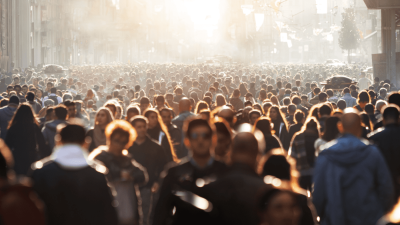Understanding the Poll
This page is approximately a 5 minute read

All over the world there are people working to help their communities understand and respond to risks, assessing benefits and trade-offs within their own context. Sense about Science and Lloyd’s Register Foundation are working with many of them to understand and support their needs, including via the Risk Know-How framework. We sought their help to create this guidance for understanding the World Risk Poll.
Risk Know-How
Visit the websiteWho takes part in the World Risk Poll?
In most of the countries where the World Risk Poll is conducted, researchers speak to a sample of around 1,000 people aged 15 or above through telephone or face-to-face interviews. They speak to larger samples in countries like China, Russia and India, which have especially large populations.
The samples are nationally representative, meaning they closely match certain characteristics of the entire country’s adult population, such as the number of people in each age group. This means the sample’s responses to questions about risk are likely to be similar to those the population as a whole would give.
Representativeness makes it possible to compare countries and demographic groups. A sample of 1,000 per country includes enough people of middle-income level, for example, to be confident their views are representative and can be compared with the same group in another country. But only some comparisons are possible.
We can group people in many ways – for example, by their age, their sex, how much education they’ve received or how much money they earn. These different factors are used to understand how certain populations act, which helps create targeted action. For instance, the finding that men, especially young men, suffer more than women from physical injuries at work can lead to more efforts to ensure young men enrol in safety training.
In some cases, the World Risk Poll targets questions to the relevant populations. For example, questions about safety at work are typically only asked to employed people. This is to avoid misleading results from people answering questions about experiences they have not had.
Using the World Risk Poll results to think about risk in different communities
The fishermen in our community in Bangladesh will go out sea fishing even with a cyclone or a storm approaching, because the risk of not catching fish and not being able to eat feels more present.
Risk is complicated. As the World Risk Poll shows, risk can be viewed both positively and negatively, depending on culture and language. The Poll explores perceptions. People’s perceptions of risk are subjective and influenced by lots of factors, but that doesn’t mean they are not useful. In fact, perceptions can tell us a lot: by comparing risk perception with experience of risks, we can understand the gaps between these measures, and investigate the reasons behind them.
These measures and gaps between them can also be mapped over time, which means that even if we don’t understand all the factors behind perceptions, we can see how they’re changing. The World Risk Poll is a ten-year project, so it will show some of these trends. The next set of interviews will be conducted in 2025.
If you engage with people in your community about risk, you will be very aware that values, culture, and context affect how risks are perceived and communicated. The global commentary on risk can feel distant. The World Risk Poll’s focus on perceptions and experiences makes international discussions about risk easier to relate to.
Often in both perception and experience of risks, people are not dealing with a risk in isolation, but are trading-off risks and considering the costs of tackling the risk, as well as long and short-term effects, plus the particular impact of the consequences for them.
Risks: trade-offs, short vs. long-term
We all weigh risks up against each other. Eliminating one risk usually means being exposed to a different one. Going to work exposes people to threats to safety in the workplace, but people trade these against the risks and consequences of unemployment.
The subjects covered in the World Risk Poll range from immediate to long-term threats. People’s perception of them is likely to reflect things like whether they live day to day or plan for the future and not just whether they receive information or have experience of them.
Frequency
Perception of risk may similarly be influenced by how often people think something will happen. While statistics might show that a bad storm will happen on average once every 20 years, this might occur as two close together and nothing for 39 years, making it outside of lived experience for many people. This is important for understanding that people might feel safe even when they are not safe, and conversely that a relatively rare hazard might still mean some people’s actual experience is of great losses or harms coming close together.
Weighting risks
People’s worries about risk reflect not just their understanding and experience, but also their priorities and which behaviours they’re willing or able to change – such as what crops to plant or how to build a house. Those who work to engage communities in conversations about risk therefore often focus on the benefits of specific actions and pay a lot of attention to what makes people feel safer and the experiences that they are drawing on. The World Risk Poll provides a systematic picture of these perceptions and experiences and in doing so makes it possible, for the first time, to consider how other communities manage similar conversations and act to make themselves safer.